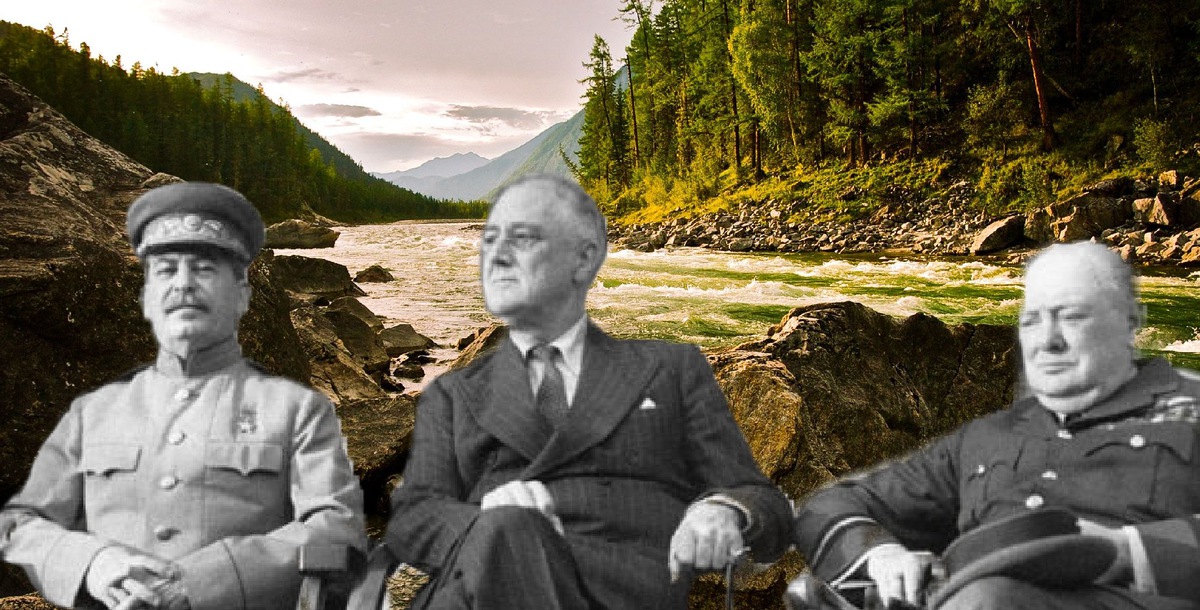January 20-22, 1944
It was the dead of winter in January of 1944. In the space of 48 hours, the 36th Division would lose over 2,000 men in an ill-fated attempt to cross the Rapido River. This would become one of the most controversial battles of WWII.
The battle became so controversial that, after the war, a congressional hearing was held to determine if actions should be taken against those who had been in command of a unit that lost so many American lives.
There were those who chose to forget the failures of the river crossing in the Cassino Valley. But the men of the 141st and 143rd Regiments of the 36th Infantry Division who survived the Rapido River Crossing never forgot.
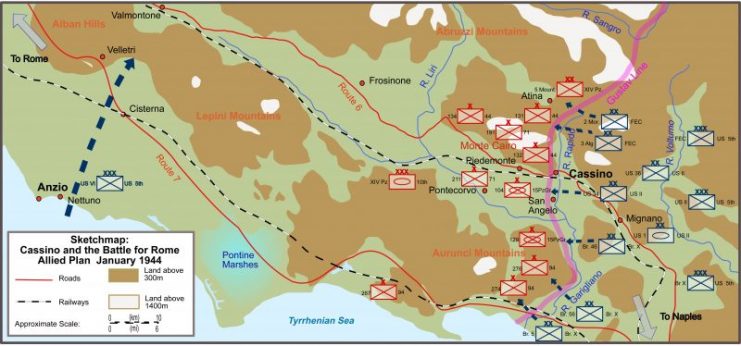
Winston Churchill had convinced President Roosevelt that the road to victory against Germany was through Italy, the soft underbelly of Hitler’s Fortress Europe. North Africa had been secured, and General Patton had won the race across Sicily to secure the island. The Italian mainland now stared across the Strait of Messina.
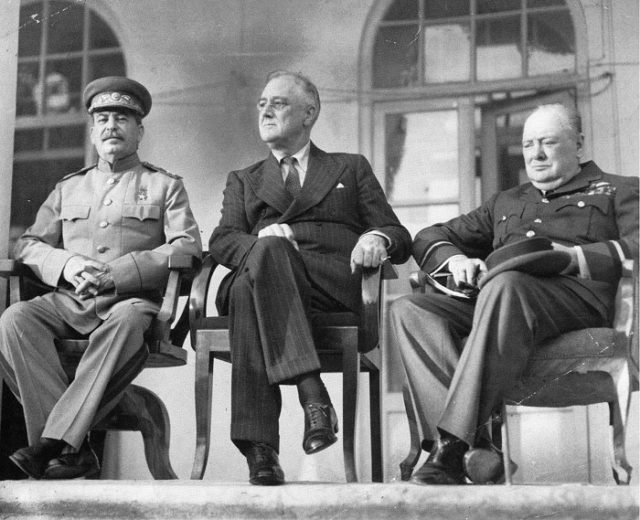
Lt. General Mark Clark had risen quickly through the ranks. He had been given command of the 5th Army. With a bullseye marked on the Italian mainland, Allied Command devised Operation Avalanche, an amphibious landing at Salerno Italy.
As a cadet at West Point in 1913, Clark befriended a cadet sergeant named David Eisenhower. This friendship would serve both men well into their military careers.
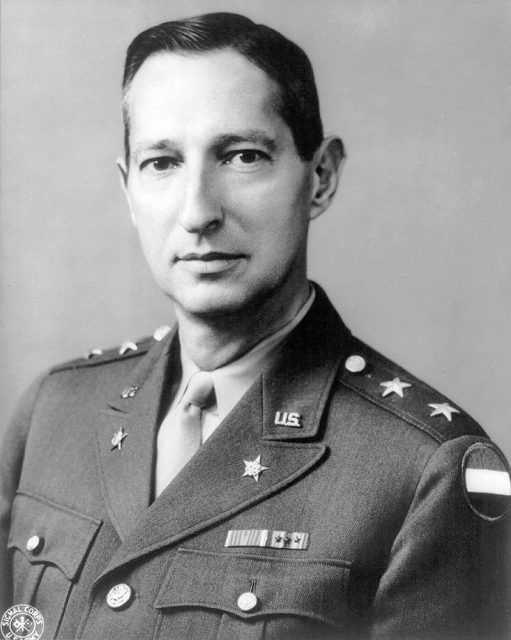
Clark had served in the first Great War against Germany. Just hours after arriving at the front lines in France, Clark was wounded by an artillery shell and evacuated. After the war, Clark was serving at Fort Lewis, Washington when he ran into Lt. Colonel Eisenhower.
Eisenhower had just arrived from the Philippines where he had been serving as an assistant to General Douglas MacArthur. He was looking to get out of what he felt was a dead-end job as an assistant to a high profile general.
After Eisenhower returned to the Philippines, he wrote to Clark often, and Clark arranged for Eisenhower’s “escape” from the Philippines.
Eisenhower was given new orders to report to Fort Lewis as a battalion commander of the 15th Infantry. As Eisenhower rose through the ranks, so did Clark. And Eisenhower never forgot what Clark had done for him.
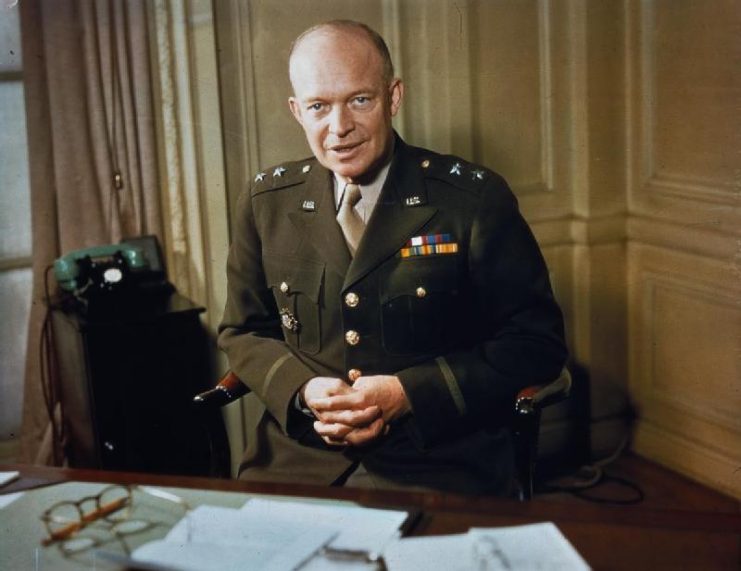
Clark’s 5th Army would now lead the assault on the Italian mainland at Salerno. Just hours from H-Hour, an announcement was heard aboard the transport armada steaming towards Salerno Bay. Supreme Allied Commander Eisenhower announced that Italy had surrendered.
The initial euphoria of the Italian surrender subsided as officers warned the troops that the German Army would be there to meet them on the beaches of Salerno.
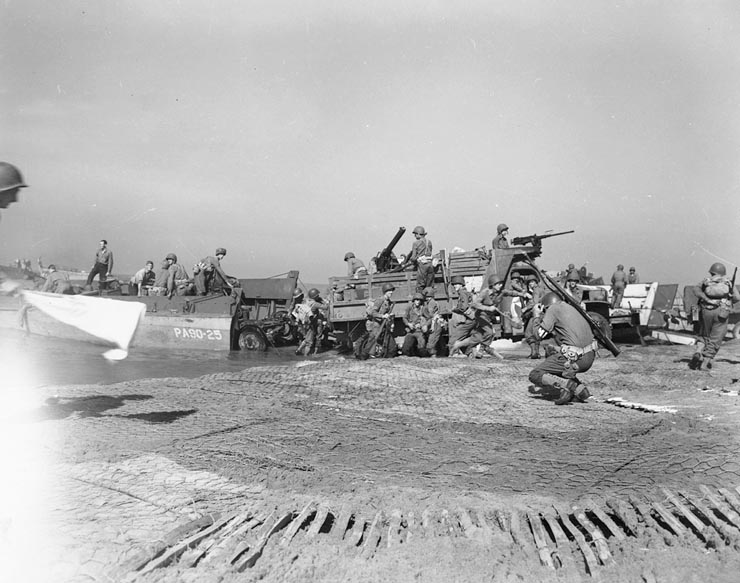
Major General Fred L. Walker was commanding the 36th Division, or “T-Patchers” as they were known. After arriving in North Africa in April 1942, the T-Patchers were kept out of the Sicily operation. They were assigned to Clark’s 5th Army, heading towards Salerno.
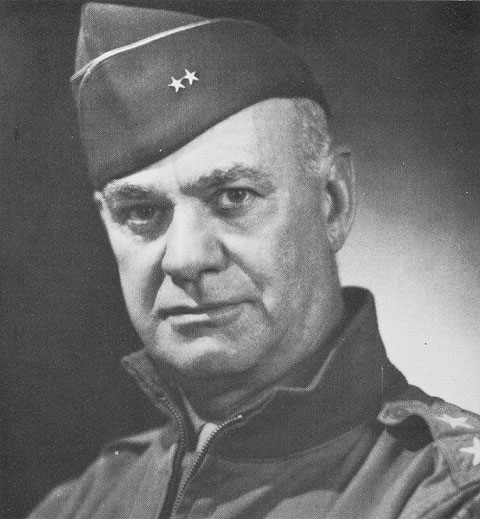
Walker had been awarded the Distinguished Service Cross during the first Great War for actions at the Marne River in France.
While commanding the 1st Battalion, 30th Infantry of the 3rd Division, Walker’s men turned back a force of 10,000 Germans who were attempting to cross the Marne River. Walker’s men held a strong defensive position, using the river as a main line of defense to enable them to slaughter the German force.
On September 9, 1943, the 36th Division became the first American unit to land on the European Continent during World War II. As Clark was waiting for news aboard the USS Ancon, the first message gave them pause: on what beach should we bury our dead?
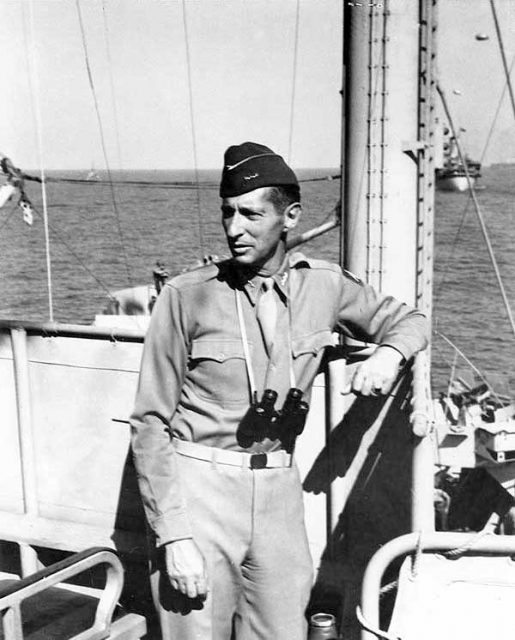
Many of the first infantry units had to fight off German Mark IV tanks with mere infantry weapons as artillery had not made it ashore. When the Germans counterattacked, they pushed the Allied forces back to the point where the word “Dunkirk” was being whispered.
For several days, it was touch and go until the beach was secured and the Germans retreated.
Field Marshall Albert Kesselring had convinced Hitler that Italy was worth holding. He also promised that he could make the Allies pay for every foot they gained in Italy.
After giving up ground at Salerno, Kesselring devised a retreating strategy by forming three defensive lines to slow down the Allies’ march on Rome.
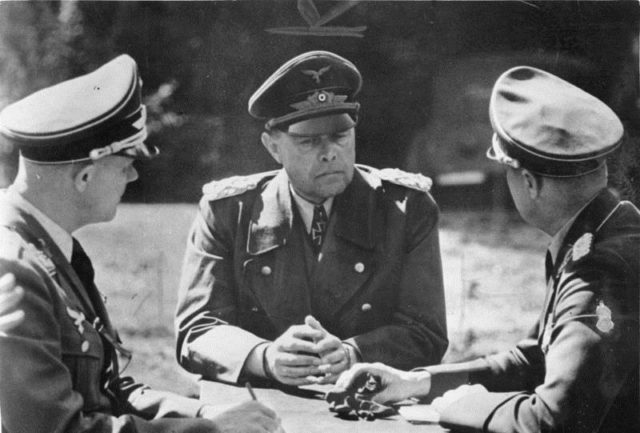
The first defensive front was the Barbara Line at the Volturno River. The second line was the Reinhard (also called the Bernhardt) Line located in the mountain ranges of central Italy. The third and final line was called the Gustav Line at the Rapido River.
While the Germans fought off the Allies at the Barbara and Reinhard Lines, they also worked around the clock to fortify a strong defensive position at the Gustav Line using the Rapido and Garigliano Rivers as the main line of defense. They used Italian citizens as laborers to cut down trees and dig trenches.
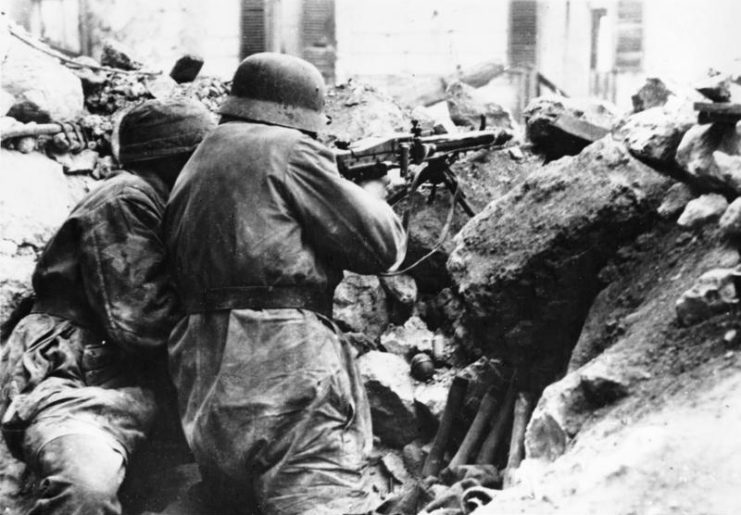
It took the Allies over four months to arrive at the Gustav Line and the banks of the Rapido River. During that time, they paid heavily in casualties at places like Mt. Rotondo, Mt. Lungo, Monte la Difensa, Monte Sammucro, and San Pietro.
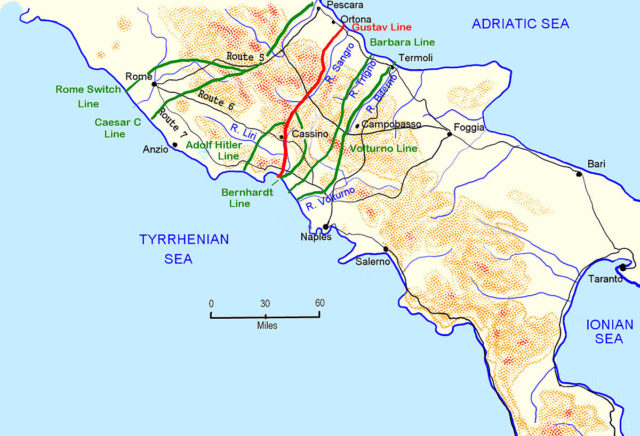
While the Allies prepared to attack the Gustav Line, they also launched Operation Shingle, an Allied landing to the rear of the Gustav Line at Anzio.
Walker’s 36th Division had been decimated at San Pietro. The 141st Infantry Regiment in Walker’s 36th Division was perched on Mt. Trocchio looking across the open one mile to the Rapido River.
With orders in hand to cross the Rapido River, an uncertain feeling came over Walker. He entered the following in his diary:
“Tonight the 36th Division will attempt to cross the Rapido River opposite San Angelo. We have done everything we can, but I do not see how we can succeed. The river is the principal obstacle of the German main line of resistance. I do not know of a single case in military history where an attempt to cross an unfordable river that is incorporated into the enemy’s main line of resistance has succeeded, so according to history we may not succeed.”
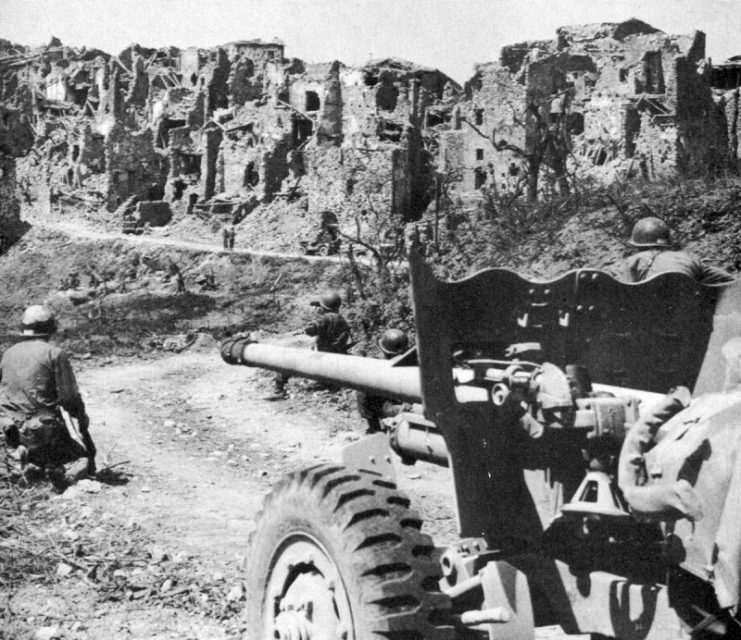
Lt. William R. Barker from Lexington Massachusetts had joined the 141st Regiment while at Camp Edwards in 1942. He had been assigned to Company E under the command of Captain John L. Chapin.
Company E in the 141st was unique in that, prior to WWII, every enlisted man in the former National Guard Company was of Mexican American heritage.
They had taken so many casualties that they were no longer an all Mexican American unit, but many of the original units from the barrios of Texas were still fighting with Company E.
Chapin had instructed Barker to find the company an avenue of approach to the river. Lt. Barker picked out the stump of a tree at the bank of the river as a point to cross. Many never made it to the river bank.
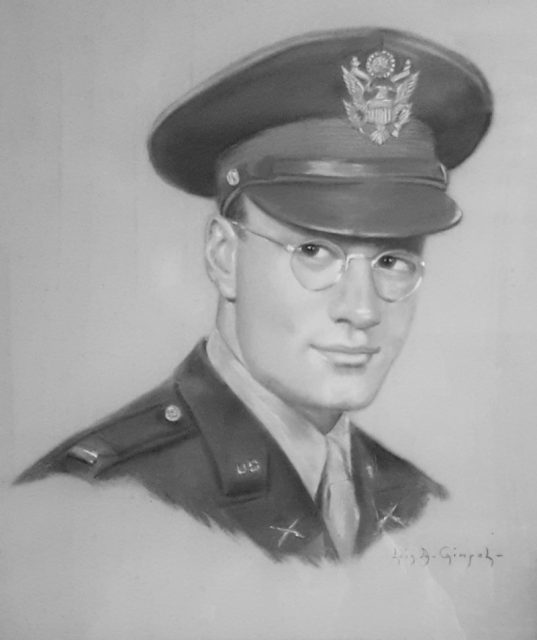
The Germans held all the high ground and could see every move the Americans made. As the T-Patchers moved from their positions on the rocky hill of Mt. Trocchio towards the river, a barrage of German artillery and Nebelwerfer rockets rained down on them.
The one-mile approach to the river across open ground was heavily mined. As the men carried the heavy wooden boats to the river, they tried hard to stay in the safe path that had been marked by tape. Amid the explosions and chaos, many unfortunately wandered into the minefields.
When one of the men in the 2nd Platoon stepped on a mine, the blast wounded Barker and another soldier. Barker instructed the wounded soldier not to move. He then crawled slowly into the minefield to get his wounded comrade to safety.
Finally arriving at the banks of the river, the 2nd Platoon attempted to get the boats in the water. Barker stated: “The boats were riddled with bullet holes and shrapnel. When we got the boats in the water they went straight down and sank. There were a lot of men in the water, we lost a lot of good men.”
One man in the water was Sgt. John Slaughter from Virginia. Barker, lying fully extended, reached out with his rifle and told the soldier to grab on. Barker was able to pull Slaughter out of the icy cold Rapido.
Captain John Chapin arrived at the banks of the river with what was left of Company E. Chapin noticed that Barker had been wounded along with several others. He instructed Barker to get the injured back to the aid station. He stated that he would take the rest of the men across.
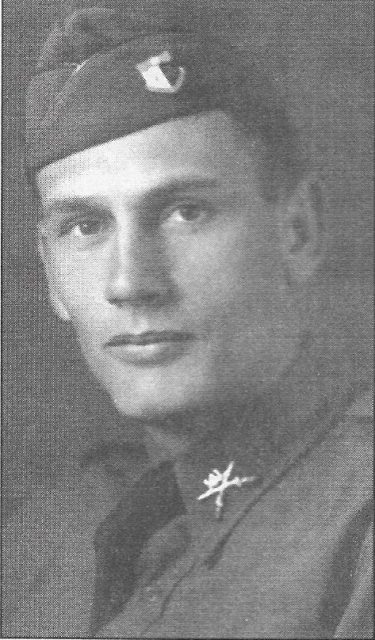
On a makeshift wooden catwalk, Company E crossed the Rapido River. They were one of the few units to actually get across. Major Milton Landry had been one of the Executive Officers of Company E. He was now the acting 2nd Battalion Commander.
Landry was able to get across the river and dig into a foxhole near the river. He stated: “E Company had penetrated the furthest and that’s where I found Captain Chapin, lying on his stomach cutting barbwire with machine gun fire just above his head.”
Chapin and Company E cut through several strands of barbwire before being halted by machine gun fire. Chapin sent Roque Segura of El Paso Texas along with Julio De Hoyos of Laredo and Rudy Trevino of San Antonio to take care of the enemy fire.
The three men outflanked the machine gun position and silenced it with hand grenades. As they made their way back, another German machine gun opened up, killing Segura and wounding De Hoyos.
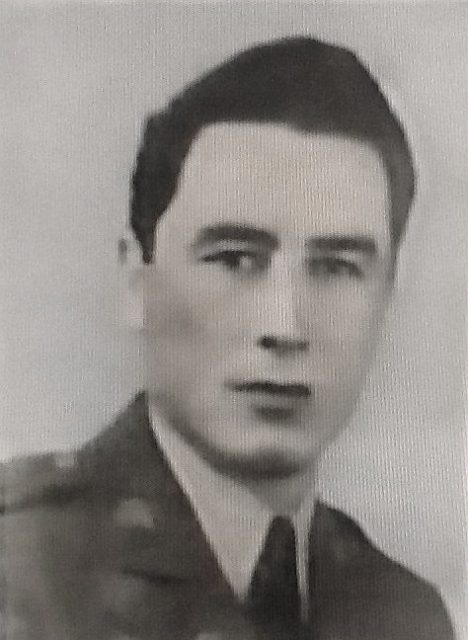
Chapin was dug into a foxhole, but he stood up to shout out orders to his men. As he did so, a German bullet hit him the head and killed him.
Alex Carrillo, Santiago Jaramillo, (both from El Paso, Texas), and Morris Crain of La Center, Kentucky were serving in the weapons platoon of Company E and made it across the Rapido. Unfortunately, they found themselves completely surrounded and had no choice but to surrender.
As the Germans looked for more prisoners, one soldier was left to guard Carrillo, Jaramillo, and Crain. Carrillo figured he was not going to get a chance to eat for a while, so he started to open up a can of C-rations. The startled German guard ordered him to stop.
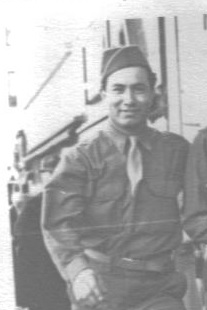
The German guard was just as hungry and moved to confiscate the goods. A shot rang out, and the guard dropped his rifle. Jaramillo jumped forward and wrestled the weapon away from the German. Jaramillo got to his feet and killed the guard.
After a few hours on the German side of the river, the three Company E soldiers made it back across the Rapido River to the American side.
Morris Crane would later be awarded the Medal of Honor posthumously for his actions in France. One hundred and fifty-four men of Company E attempted the Rapido River crossing, but only twenty-seven enlisted men would return.
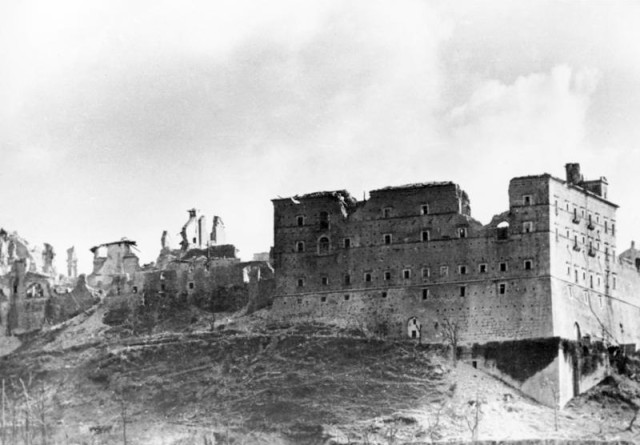
Read another story from us: The Failed Secret Mission to Convince Italy to Abandon the Nazis
Lt. Barker would later say, “Without a doubt, by ordering me to take back the wounded back to the aid station, [Chapin] saved my life.” For his actions at the Rapido River, Barker would be awarded the Distinguished Service Cross.
In the year 2000, a new high school was opened in El Paso Texas near Fort Bliss. The school name is “Captain John L. Chapin High School,” named after the commanding officer of Company E 141st Regiment 36th Division.
Dave Gutierrez – writer and author of the book Patriots from the Barrio – the story of Company E 141st Regiment: the only all Mexican American Army unit in WWII.
